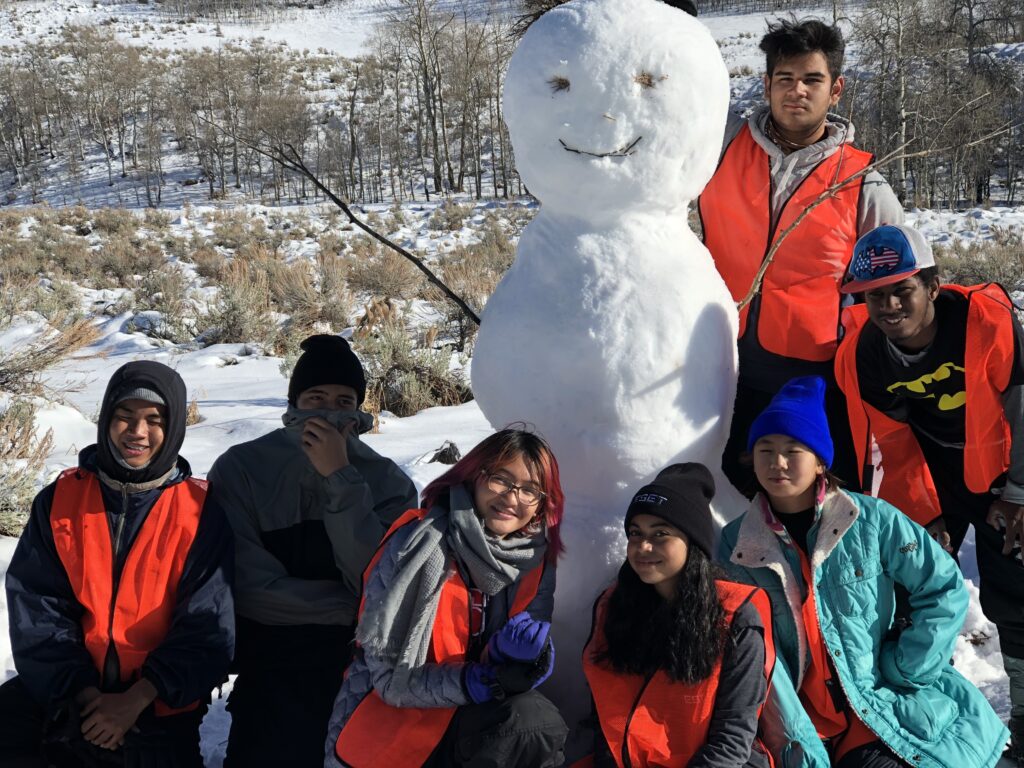Editor’s Note: DJ Sandler is an alumnus of Teton Science Schools Field Education programs and is spending the fall with us as a program and marketing intern before he starts his freshman year at Tufts University in Boston, Massachusetts.
Over the past few weeks, I’ve had the unique opportunity to observe Teton Science School field education programs. I saw many ways in which Teton Science Schools used field education to encourage outdoor and community leadership in all types of students, and in many cases leveraged their students’ unique personal background to increase comprehension. I was amazed by how different each of the groups were and even more amazed Teton Science Schools’ Field Education Programs could strike such a chord with all of them. The Village School, a private school in Houston, Texas that teaches children from across the globe, gave me an international perspective on the Greater Yellowstone Ecosystem; the Wahlert School, a private Catholic school in Iowa with a small student body came from a very rural environment and the students from Carson High School came from Los Angeles, an urban environment.

While place of origin had a profound effect on how groups perceived this environment, individual backgrounds also affected how people interacted with their new surroundings.
For Mark, an English teacher from the Village School, the Greater Yellowstone Ecosystem elicits concepts from an Aldous Huxley essay, in which Huxley reveals the detriments of using mathematical and scientific fact to explain everything. “It takes away from the beauty of [the Tetons] to try to quantify them,” Mark said gazing out of the window of the small white bus bringing us back from Granite Canyon to TSS’ Jackson Campus.
Eldon, a tenth grader from Carson High School, had an equally valuable take on the new environment. It reminded him of his home before he moved to Los Angeles. He enthusiastically described frolicking in the snow with his cousins in shorts and t-shirts, knowing that he was going to be frostbitten and shivering afterwards but not caring.
Rather than being challenged by these differing perspectives, TSS’s Field Education educators viewed them as an opportunity. Through different activities TSS was able to create perseverance and confidence in unique ways for each group. I saw the epitome of this strategy as I hiked up to Coyote Rock with Carson High School. Being from Los Angeles the majority of this group had little to no experience hiking in mountainous foothills., Although it was a difficult task they proceeded upwards and stayed in high spirits. In the midst of upbeat laughter and conversation boys waited behind trees and quickly shook them as their friends strode by, creating small flurries of snow. The mood stayed vibrant until we began the final ascent upwards; while I walked with the crowd in front, still as cheerful as before, a few kids stayed behind, unmoving and breathing heavily. While my group crested the hill screaming in ecstatic excitement at the sight of the massive boulder known as Coyote Rock, I stood at the hillcrest, watching the group of kids behind us.
Looking back, I thought of my years at Teton Science School, I had never been an athletic person and much of my time was spent lagging behind the main group of students. However, as I climbed at my own pace I never felt judged; the camaraderie created by TSS spurred my love of the outdoors as an exercise in persistence. Although my initial view of the natural world was as a place where I was constantly falling behind, TSS’ education structure made me feel like a leader, responsible for persevering and spreading this sense of camaraderie in my everyday life.

Throughout my weeks with Field Education programs I saw myriad of leadership styles. TSS taught the Village School, an international school from Houston, Texas, about the importance of diversity in the environment and related it back to their home lives. Through these ideas the kids from the Village School could become advocates for diversity in their community, the world, and the environmental movement. Gabe, the aforementioned pastor who chaperoned Carson high-school, became a leader as he talked to students over the course of the week, keeping spirits up even in the hardest of times, as is often the job of a pastor. Jane, a student from the Wahlert School in Iowa with a clear, scientific outlook on the natural world, was able to be a leader when we found a trail of blood deep in the woods. She spoke up, proposing her hypotheses to the group with facts such as the animal’s size and the pattern of the blood droplets to back her up.
Having the opportunity to observe differing field education programs I saw community leadership palpably in each experience. I saw students strengthening their grit, understanding of the natural world, and confidence. Even years ago, as a young kid from Vermont, my time at Teton Science School was instrumental to increasing both my persistence and self-assurance. Having people from diverse perspectives sharing an experience through the Teton Science School is instrumental in developing resilience and leadership skills that they can bring home to their community.

At Coyote Rock, the students began to emerge over the hill and gasp in relief at the sight of the rock. As Robin, a girl who’d had particular difficulty crested she leaned on her hiking poles gasping for air.
“How’s it going Robin?” I asked. She smiled and gave me a thumbs up as she breathed in heavily for air. She had persisted through a seemingly insurmountable task without complaint and had made it to the top. I witnessed this kind of leadership and growth many times in my two weeks observing TSS’ Field Education Programs.. Despite their many differences they now had one thing in common: a memorable experience in the Tetons and tangible leadership qualities to bring back home.


